 W
WMaster Commandant William Henry Allen was an American naval officer during the War of 1812.
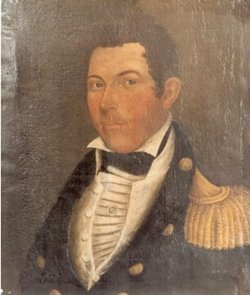 W
WCommodore James Armstrong was an officer in the United States Navy.
 W
WJohn Henry Aulick was an officer in the United States Navy whose service extended from the War of 1812 to the end of the antebellum era.
 W
WWilliam Bainbridge was a Commodore in the United States Navy. During his long career in the young American Navy he served under six presidents beginning with John Adams and is notable for his many victories at sea. He commanded several famous naval ships, including USS Constitution, and saw service in the Barbary Wars and the War of 1812. Bainbridge was also in command of USS Philadelphia when she grounded off the shores of Tripoli in North Africa, resulting in his capture and imprisonment for many months. In the latter part of his career he became the U.S. Naval Commissioner.
 W
WJoshua Barney was an American Navy officer who served in the Continental Navy during the Revolutionary War. He later achieved the rank of commodore in the United States Navy and also served in the War of 1812.
 W
WJames Barron was an officer in the United States Navy. He served in the Quasi-War and the Barbary Wars, during which he commanded a number of famous ships, including USS Essex and USS President. As commander of the frigate USS Chesapeake, he was involved in the Chesapeake–Leopard affair in 1807 which led to the surrender of his ship to the British and resulted in him being court-martialed for his actions during incident. After criticism from some fellow officers, the resulting controversy led Barron to a duel with Stephen Decatur, one of the officers who presided over his court-martial. Suspended from command, he pursued commercial interests in Europe during the War of 1812. Barron finished his naval career on shore duty, becoming the Navy's senior officer in 1839.
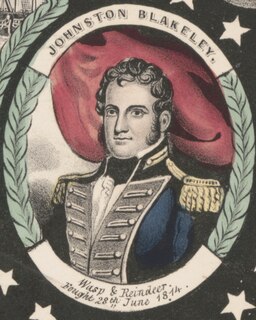 W
WJohnston Blakeley also spelled Johnston Blakely was an officer in the United States Navy during the Quasi-War with France and the War of 1812. He is considered to be one of the most successful American naval officers of that period.
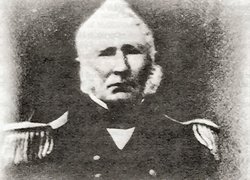 W
WCharles Boarman was a career officer in the United States Navy. He entered the naval service shortly before the War of 1812 and served until 1876, subsequently retiring as a rear admiral. He held a number of important posts, both in peace and wartime, in the Mediterranean, West Indies and Brazil Squadrons and as commandant of the Brooklyn Navy Yard. He was also assigned to special duty during the American Civil War and a member of the U.S. Naval Board at Washington, DC.
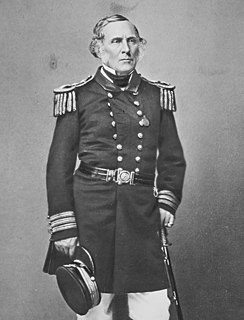 W
WSamuel Livingston Breese was a rear admiral in the United States Navy. His active-duty career included service in the War of 1812, the Mexican–American War, and the American Civil War.
 W
WLieutenant William Ward Burrows II was an officer in the United States Navy during the First Barbary War and the War of 1812. His father, William Ward Burrows I, was the second Commandant of the Marine Corps.
 W
WCommodore John Cassin was a United States Navy officer, who led the vital defense of Gosport Navy Yard during the War of 1812 and served as its Commandant.
 W
WStephen Cassin was an officer in the United States Navy during the First Barbary War and the War of 1812.
 W
WIsaac Chauncey was an officer in the United States Navy who served in the Quasi-War, The Barbary Wars and the War of 1812. In the latter part of his naval career he was President of the Board of Navy Commissioners.
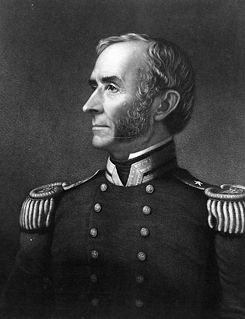 W
WCommodore David Conner was an officer of the United States Navy. He served in the War of 1812 and led the Home Squadron during the Mexican–American War. He led the successful naval assault during the siege of Veracruz which included the landing of 10,000 U.S. troops, the largest U.S. military amphibious assault at the time. He served on the Board of Navy Commissioners; as the first Chief of the Bureau of Construction, Equipment, and Repair; as a Special Diplomatic Agent to Mexico and commanded the Philadelphia Naval Yard.
 W
WHenry Wharton Conway was a United States naval officer during the War of 1812 and a politician in Arkansas Territory, who was elected as a territorial delegate (1823–1827) to the United States House of Representatives for three consecutive congresses. He died in 1827 as a result of wounds from a duel with Robert Crittenden, a former friend and political ally.
 W
WWilliam Sitgreaves Cox (1790–1874) was an American sailor during the War of 1812. He was serving as acting lieutenant aboard the USS Chesapeake at the time of its capture by HMS Shannon. Cox was subsequently court-martialed for his actions during that engagement and discharged from the Navy. After advocacy from his descendants, his rank was restored by President Harry S Truman.
 W
WCommodore William Montgomery Crane was an officer in the United States Navy during the First Barbary War and the War of 1812. He was the son of General William Crane who was wounded at the Battle of Quebec while serving under Richard Montgomery in honor of whom he was given the middle name of Montgomery. His brother was Colonel Ichabod Crane who also served in the War of 1812 as well as the Mexican War.
 W
WStephen Decatur Jr. was a United States naval officer and commodore. He was born on the eastern shore of Maryland in Worcester County. His father, Stephen Decatur Sr., was a commodore in the United States Navy who served during the American Revolution; he brought the younger Stephen into the world of ships and sailing early on. Shortly after attending college, Decatur followed in his father's footsteps and joined the U.S. Navy at the age of nineteen as a midshipman.
 W
WJohn Herbert Dent was an officer in the United States Navy during the Quasi-War, the First Barbary War, and the War of 1812. He was acting captain on the USS Constitution" during the attacks on Tripoli in 1804.
 W
WDaniel Dobbins was a sailing master in the United States Navy and captain in the United States Revenue Cutter Service. He fought in the War of 1812 and was in charge of the building of the ships at Erie, Pennsylvania that Oliver Hazard Perry commanded in the Battle of Lake Erie.
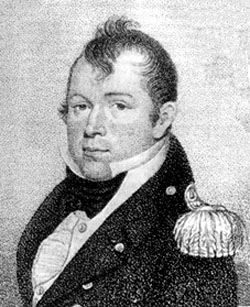 W
WJesse Duncan Elliott was a United States naval officer and commander of American naval forces in Lake Erie during the War of 1812, especially noted for his controversial actions during the Battle of Lake Erie.
 W
WDavid Glasgow Farragut was a flag officer of the United States Navy during the American Civil War. He was the first rear admiral, vice admiral, and admiral in the United States Navy. He is remembered for his order at the Battle of Mobile Bay usually paraphrased as "Damn the torpedoes, full speed ahead" in U.S. Navy tradition.
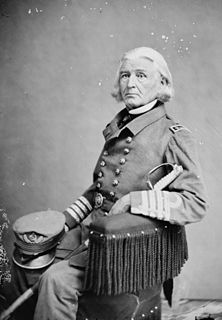 W
WFrench Forrest was an American naval officer who served first in the United States Navy and later the Confederate States Navy. His combat experience prior to the American Civil War included service in the War of 1812 and the Mexican–American War.
 W
WFrancis Hoyt Gregory was an officer in the United States Navy during the War of 1812 through to the Civil War, serving then as a rear admiral.
 W
WSamuel Hambleton was an officer in the United States Navy who served with distinction during the War of 1812.
 W
WGeorge Nichols Hollins (1799–1878) was an American Captain and Naval Base Commander, in the US Navy and later a Captain and Commodore in the Confederate Navy. He famously won the Battle of the Head of Passes, a naval battle of the American Civil War, returning to New Orleans a hero.
 W
WIsaac Hull was a Commodore in the United States Navy. He commanded several famous U.S. naval warships including USS Constitution and saw service in the undeclared naval Quasi War with the revolutionary French Republic (France) 1796–1800; the Barbary Wars, with the Barbary states in North Africa; and the War of 1812 (1812–1815), for the second time with Great Britain. In the latter part of his career he was Commandant of the Washington Navy Yard in the national capital of Washington, D.C., and later the Commodore of the Mediterranean Squadron. For the infant U.S. Navy, the battle of USS Constitution vs HMS Guerriere on August 19, 1812, at the beginning of the war, was the most important single ship action of the War of 1812 and one that made Isaac Hull a national hero.
 W
WCommodore Jacob Nicholas Jones was an officer in the United States Navy during the Quasi-War with France, the First Barbary War and the Second Barbary War, and the War of 1812.
 W
WThomas ap Catesby Jones was a U.S. Navy commissioned officer during the War of 1812 and the Mexican–American War.
 W
WBeverley Kennon was a career officer in the United States Navy who attained the rank of captain as head of the Bureau of Construction and Repair. He died as a result of the explosion aboard the USS Princeton.
 W
WElie Augustus Frederick La Vallette was one of the first rear admirals appointed in the United States Navy when Congress created the rank in July 1862.
 W
WJames Lawrence was an officer of the United States Navy. During the War of 1812, he commanded USS Chesapeake in a single-ship action against HMS Shannon commanded by Philip Broke. He is probably best known today for his last words, "Don't give up the ship!", spoken during the capture of Chesapeake. The quotation is still a popular naval battle cry, and was invoked by Oliver Hazard Perry's personal battle flag, adopted to commemorate his dead friend.
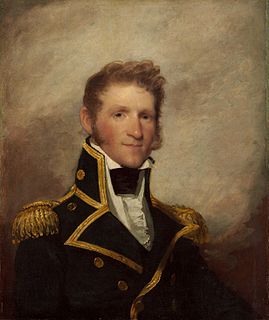 W
WThomas Macdonough, Jr. was an early-19th-century Irish-American naval officer noted for his roles in the first Barbary War and the War of 1812. He was the son of a revolutionary officer, Thomas Macdonough, Sr. who lived near Middletown, Delaware. He was the sixth child from a family of ten siblings and was raised in the countryside. He entered naval life at an early age, receiving a midshipman's commission at the age of sixteen. Serving with Stephen Decatur at Tripoli, he was a member of "Preble's Boys", a select group of U.S. naval officers who served under the command of Commodore Preble during the First Barbary War. Macdonough achieved fame during the War of 1812, commanding the American naval forces that defeated the British navy at the Battle of Lake Champlain, part of the larger Battle of Plattsburgh, which helped lead to an end to that war.
 W
WJohn Berrien Montgomery was an officer in the United States Navy who rose up through the ranks, serving in the War of 1812, Mexican–American War and the American Civil War, performing in various capacities including the commanding of several different vessels.
 W
WCharles Morris was a United States naval officer and administrator whose service extended through the first half of the 19th century.
 W
WFoxhall Alexander Parker Sr. was an officer in the United States Navy. He was Commander-in-Chief of the East India Squadron, commanded the Home Squadron, and was commander of the USS Constitution.
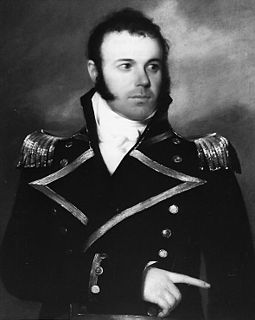 W
WDaniel Todd Patterson was an officer in the United States Navy during the Quasi-War with France, the First Barbary War, and the War of 1812.
 W
WHiram Paulding was a rear admiral in the United States Navy, who served from the War of 1812 until after the Civil War.
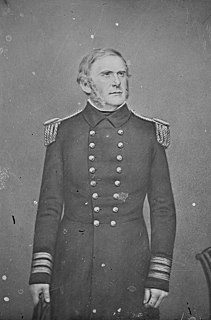 W
WCommodore Garrett Jesse Pendergrast was an officer in the United States Navy, who served at the beginning of the American Civil War.
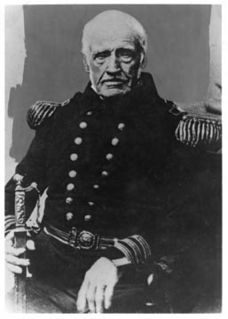 W
WJohn Percival, known as Mad Jack Percival, was a celebrated officer in the United States Navy during the Quasi-War with France, the War of 1812, the campaign against West Indies pirates, and the Mexican–American War.
 W
WOliver Hazard Perry was an American naval commander, born in South Kingstown, Rhode Island. As the best-known and most prominent member of the Perry family naval dynasty, he was the son of Sarah Wallace Alexander and United States Navy Captain Christopher Raymond Perry, and older brother of Commodore Matthew C. Perry.
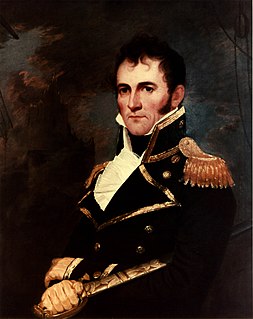 W
WDavid Porter was an officer in the United States Navy in the rank of captain and the honorary title of commodore. Porter commanded a number of U.S. naval ships, including the famous USS Constitution. He saw service in the First Barbary War, the War of 1812 and in the West Indies. On July 2, 1812, Porter hoisted the banner "Free trade and sailors' rights" as captain of USS Essex. The phrase resonated with many Americans. Porter was later court martialed; he resigned and then joined and became commander-in-chief of the Mexican Navy.
 W
WGeorge Campbell Read was a United States Naval Officer who served on Old Ironsides during the War of 1812 and commanded vessels in actions off the Barbary Coast and India. Read eventually rose to the rank of rear admiral.
 W
WSamuel Chester Reid was an officer in the United States Navy who commanded a privateer during the War of 1812. He is also noted for having helped design the 1818 version of the flag of the United States, which first established the rule of keeping thirteen stripes and adding one star for each U.S. state.
 W
WJohn Rodgers was a senior naval officer in the United States Navy during its formative years in the 1790s through the late 1830s. He served under six presidents for nearly four decades. His service took him through many military operations in the Quasi-War with France, both Barbary Wars in North Africa, and the War of 1812 with Britain.
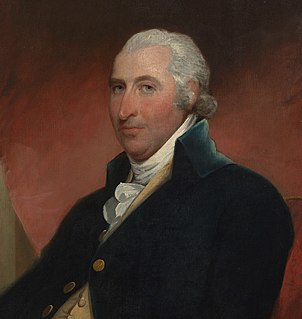 W
WJohn Shaw was an Irish-born American offcer in the United States Navy.
 W
WWilliam Branford Shubrick was an officer in the United States Navy. His active-duty career extended from 1806 to 1861, including service in the War of 1812 and the Mexican–American War; he was placed on the retired list in the early months of the Civil War.
 W
WCommodore Arthur Sinclair was an early American naval hero, who served in the U.S. Navy during the Quasi-War with France, the First Barbary War and in the War of 1812. His three sons also served in the Navy; they resigned in 1861, however, to serve in the Confederate Navy.
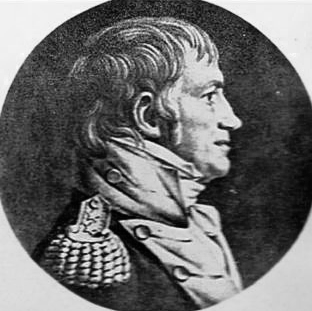 W
WCaptain John Smith was a United States Navy officer, who served during the First Barbary War and later in the War of 1812. He commanded USS Vixen, USS Syren, USS Wasp, USS Essex, USS Congress, and USS Franklin.
 W
WJoseph Smith was a rear admiral of the United States Navy, who served during the War of 1812, the Mexican–American War, and the American Civil War.
 W
WCharles Stewart was an officer in the United States Navy who commanded a number of US Navy ships, including USS Constitution. He saw service during the Quasi War and both Barbary Wars in the Mediterranean along North Africa and the War of 1812. He later commanded the navy yard in Philadelphia and was promoted to become the Navy's first flag officer shortly before retiring. He was promoted to rear admiral after he retired from the Navy. He lived a long life and was the last surviving Navy captain who had served in the War of 1812.
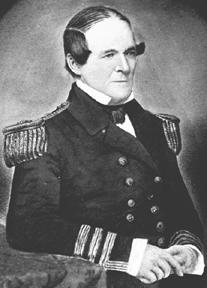 W
WCornelius Kinchiloe Stribling was a rear admiral in the United States Navy who served during the War of 1812, the Second Barbary War, the Mexican–American War, and the American Civil War.
 W
WCommodore Josiah Tattnall was an officer in the United States Navy during the War of 1812, the Second Barbary War and the Mexican–American War. He later served in the Confederate Navy during the American Civil War.
 W
WCyrus Tiffany, sometimes recorded as Silas Tiffany, was an African-American fifer and sailor who served in the War of 1812 under Oliver Hazard Perry. In the Battle of Lake Erie on September 10, 1813, Tiffany is said to have heroically shielded Perry as they transferred command from the damaged USS Lawrence to the USS Niagara.
 W
WThomas Tingey was a commodore of the United States Navy. Originally serving in the British Royal Navy, Tingey later served in the Continental Navy. Tingey served with distinction during the Quasi-War and served as the commandant of the navy yard until his death.
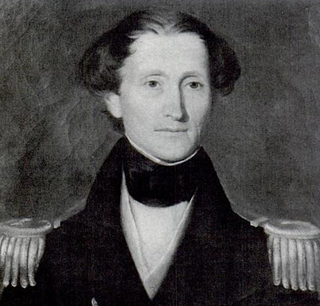 W
WPhilip Falkerson Voorhees was an officer in the United States Navy, who served during the War of 1812, and later commanded the East India Squadron.
 W
WLewis Warrington was an officer in the United States Navy during the Barbary Wars and the War of 1812. He later became a Captain. He temporarily served as the Secretary of the Navy. His highest rank was commodore.
 W
WMelancthon Taylor Woolsey was an officer in the United States Navy during the War of 1812 and battles on the Great Lakes. He supervised warship construction at Navy Point in Sackets Harbor, New York, and later had a full career in the Navy.